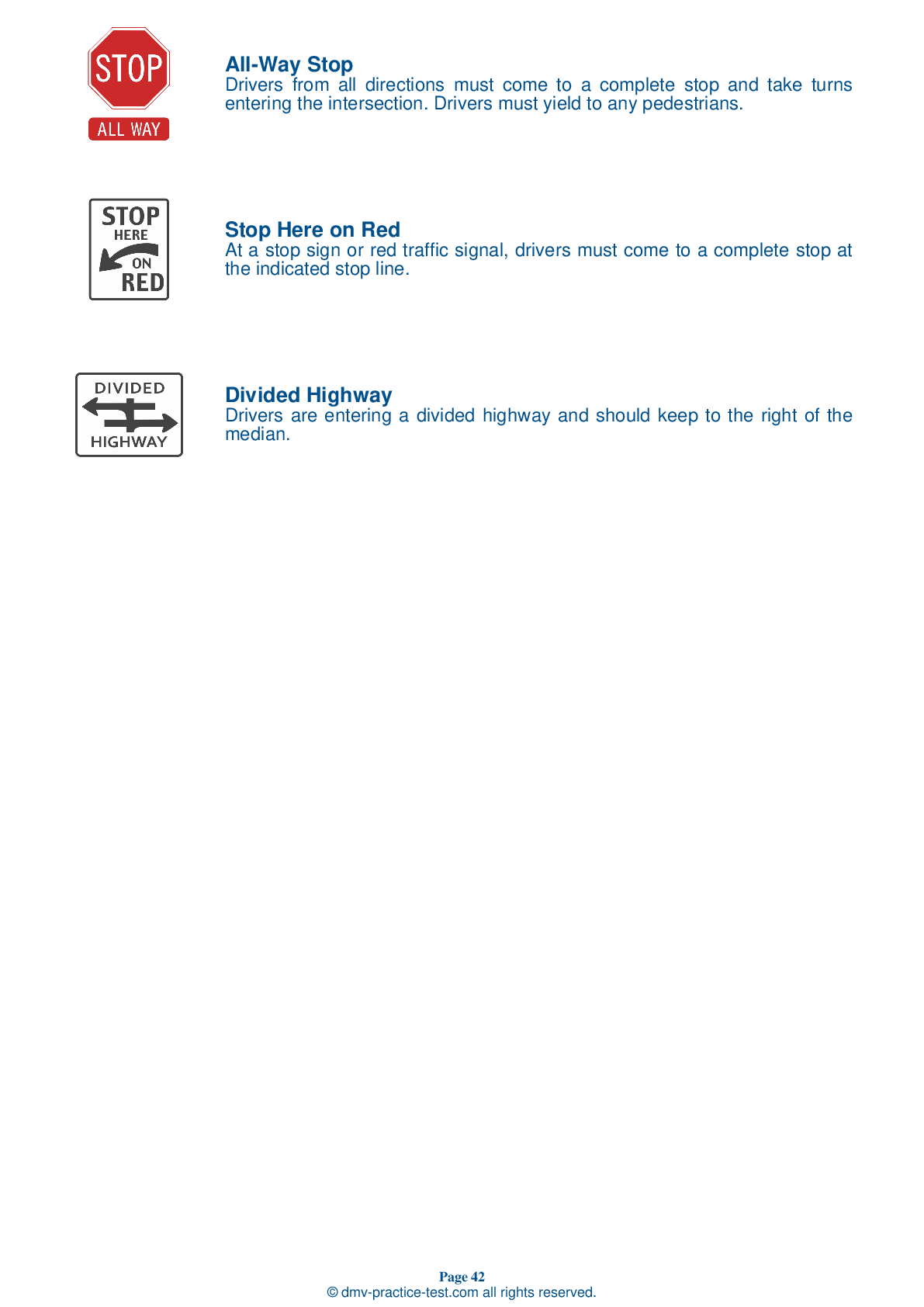FREE California DMV Practice Test #5 Page 4 of 6
This California DMV practice test includes 36 of the most vital road signs and rules questions taken directly from the official California Driver Handbook for 2025. Use genuine questions that are very similar (often identical!) to the DMV driving permit practice test and driver's license exam to prepare for the DMV driving permit test and driver's license exam.
To help you recall the topics, each ca dmv practice test question includes a hint and explanation. The written component of the official DMV test will consist of questions about regulations of the road, traffic signs, and driving statutes, as well as information from the Driver Handbook.
To get the required 83 percent passing score to be allowed to pass, you must correctly answer 38 out of 46 questions (or 30 out of 36 if you are over 18). Use this DMV practice exam to help you prepare for your California instruction permit or driver's license.
How does it work?
California residents using any form of testing help during the test will result in an automatic failure, and the DMV may take further action against your driving permit, so please don't cheat.
Ideally suited for:
- California Driver’s License
- Driver's Learner Permit in California
- CA Refresher Test for Senior Citizens CA
- CA Driver’s License Renewal
What to expect on the CA DMV exam:
- 36 questions
- To pass, you must have 30 accurate answers.
- a passing grade of 83%
- The minimum age to apply;15 ½
19 . Sudden wind gusts on highways:
While it can create special problems for large vehicles, strong wind can cause problems for all drivers. Wind can lower visibility by blowing dirt and dust into the roadway, but it can sometimes also physically move a vehicle.
20 . You should increase the distance between your vehicle and the vehicle ahead when you:
When being tailgated, create extra space in front of your vehicle and do not brake suddenly. Slow down gradually or merge into another lane to prevent a collision with the tailgater.
21 . If you are driving and a tire suddenly goes flat, you should:
If a tire blows out or suddenly goes flat while you are driving, grip the steering wheel firmly and keep the vehicle aiming straight. Take your foot off the accelerator and do not brake. Allow the vehicle to slow by itself and use the brakes gently, but only if necessary. Pull off the road when it is safe to do so.
22 . This road sign means:

Warning signs provide notice to road users of a situation that might not be readily apparent and are usually yellow with black markings. This sign alerts drivers to the right lane ending and tells them to prepare for potential merging traffic.
23 . Where is it safe to pass another vehicle?
Never pass within intersections or at other intersecting points, such as parking lot entrances and alleyways. Any time your view is blocked by a curve or a hill, you should stay in your lane and assume that there is an oncoming vehicle just out of sight. Wherever signs and/or pavement markings permit passing other vehicles, you will have to determine whether or not you have enough space to pass in a safe manner.
24 . This road sign means:

Warning signs are usually yellow with black markings. This sign indicates the presence of a crosswalk, regardless of if it is marked on the pavement or not. Upon seeing this sign, you should be alert and allow any pedestrians to cross the road safely.
Need Car Insurance? No problem!
Compare the best rates in California and find a personalized policy that meets your needs.
1. Are You Currently insured ?
2. Married ?
3. Do you own your Home?
4. Do you have more than 1 car ?
5. Have you or a Family Member Honorably Served in U.S. Military ?
6. Your Name
7. Age
8. Zip code
IMPORTANT REMINDER:Auto Insurance is Mandatory to drive in California. Get covered before you hit the road to avoid any fines.
Ranked by best match



